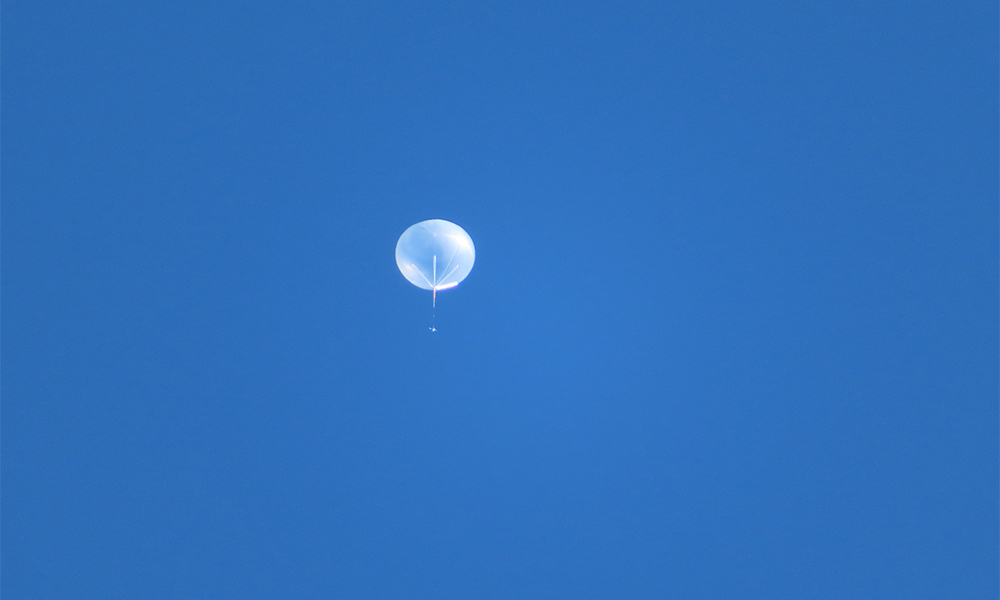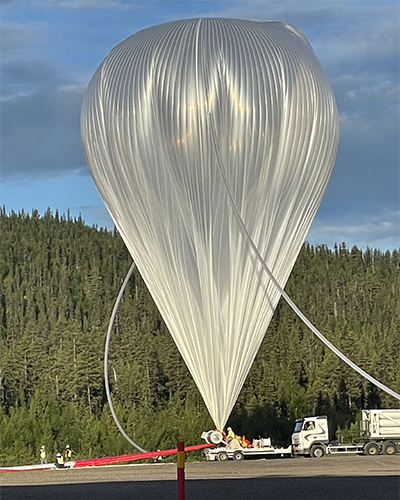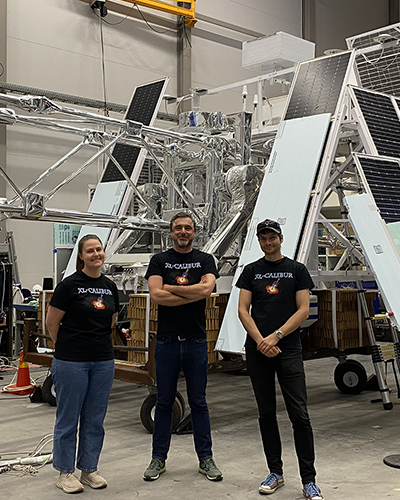Space balloon with telescope provides new insights into black holes

A KTH team will explore neutron stars and black holes through a new, twelve-metre-long space telescope weighing about two tonnes - XL-Calibur.
"We have lifted the telescope to an altitude of 40 kilometres using a gigantic helium-filled balloon," says Mark Pearce, professor of physics at KTH.
At around 5 a.m. on 9 July, after more than 10 attempts since the beginning of the summer, the space balloon took off from Esrange in Kiruna and headed for Canada. Mark Pearce, previous measurements were made using a space balloon in 2013 and 2016 – how does this KTH project differ from the others?
“To produce new results, we need to measure the energy and polarisation of X-rays even more accurately, and we have now developed the new, advanced XL-Calibur X-ray telescope together with colleagues in the USA and Japan."

Mark Pearce and his project team, financed by Rymdstyrelsen and Vetenskapsrådet, started work at Esrange in mid-April. All the equipment was shipped in from a NASA facility in the US and the team assembled and tested the technology.
“The goal was to launch the balloon in mid-May, but the stratospheric winds towards Canada were established later than usual this year. Finally, the weather was good enough! The balloon is like a giant sail, and there must be no wind at altitudes of up to several hundred metres when the balloon takes off," Pearce says.
What is the next step in the project?
"Data monitoring was done from the ground via video link throughout the flight, it was long days of shift work, and so much fun to see the data trickling into our computers on the ground. The telescope was parachuted back to the ground and landed in good condition near Kugluktuk, Nunavut, Canada. It was picked up and transported to a NASA facility in the US, and eventually we will get our part of the telescope to KTH for maintenance and testing before the next flight - probably from Antarctica in a couple of years."
Was there any risk that the balloon would take the wrong route and perhaps be perceived by other countries as a threat?
“The established stratospheric winds have a very predictable behaviour. The balloon flew to Canada along a trajectory that was expected to maintain a constant latitude. Of course, it was important that the flight ended over Canada – the balloon should not move on to Russian airspace."
"The balloon's journey is stopped by sending a radio command to the balloon's computer system to open a valve and release helium, causing it to sink. The computer system has in-built redundancy, that is a duplicate set of critical components, and it has been used many times before."

Can you briefly describe the characteristics of the X-ray telescope?
“XL-Calibur consists of a 12-metre long carbon fibre structure with X-ray optics mounted at one end and a polarisation-sensitive X-ray detector at the other end. The polarisation-sensitive X-ray detector is partly constructed in the research lab at KTH Royal Institute of Technology.”
“Because X-rays are absorbed in the atmosphere, our observations are carried out 40 kilometres up in the air. The telescope is aimed at the sky with enormous precision – no easy task, as the telescope is suspended 100 metres below the balloon, which in turn is carried by the stratospheric winds four miles up in the air.”
What are your hopes for the final result?
“We want to increase our knowledge of some of the coolest objects in the universe – black holes and rotating neutron stars, known as pulsars. The goal is to develop new knowledge about the Crab pulsar and the black hole Cygnus X-1," Pearce says.
"The Crab pulsar is like a cosmic lighthouse – short flashes of X-ray light seen from Earth 30 times per second. We want to understand where the strong X-rays are coming from.
“In the case of Cygnus X-1, we want to understand the geometry near the black hole where gravity is so strong that the light actually bends. Through our previous measurements we have come a long way, but with the help of our further developed XL-Calibur telescope we hope to reveal new exciting contexts. From what we have seen so far we have a very exciting time ahead of us.
Katarina Ahlfort
Photo: NASA, KTH
